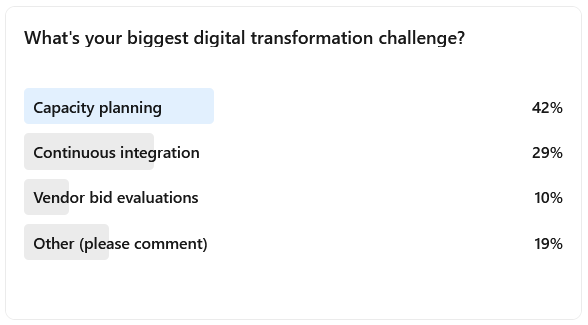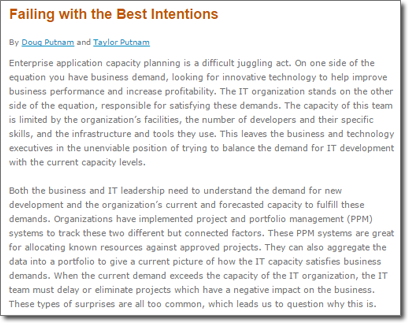What's the Most Challenging Part of Digital Transformation?
Would you say it's resource capacity planning? Building continuous integration? Knowing if vendor bids are competitive? As a follow up to a recent post I shared on reducing uncertainty in digital transformation, I posed this question to my LinkedIn connections in a poll, giving them options I sourced from respected colleagues with experience in digital transformations. I also asked for suggestions not listed, in case there were challenges I might not have considered. I appreciated the great feedback I received and wanted to share the valuable insights I gleaned from the poll.

42% voted for “Capacity Planning” as their biggest challenge, 29% voted for “Continuous Integration,” 10% voted for “Vendor Bid Evaluations,” and 19% voted “Other."


